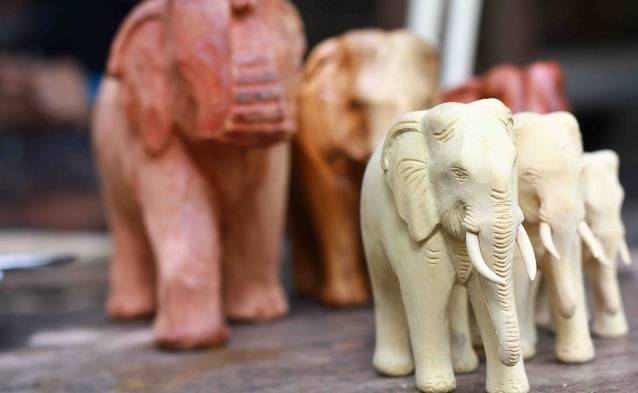At one time forests covered much of Laos, providing the raw materials for the emergence of woodcarving as a major craft. The woodcarving traditionally served as a sculptural art, and with the spread of Buddhism it assumed an increasingly important role in the production of Buddha images and the carving of temple and palace door frames, pillars, roofs, lintels and decorative friezes.
During the Lane Xang era skilled carpenters were also employed to produce royal thrones, ornate wooden furniture, royal barges and other forms of regal and aristocratic transportation such as palanquins and elephant howdahs. By the early 20th century their work had expanded to include the production of high-quality tables, chairs and cabinets for a growing urban middle class.
The decline in traditional Buddhist practices during the 1970s resulted in the loss of many traditional woodcarving skills within the monkhood which the UNESCO Cultural Survival and Revival in the Buddhist Sangha Project, Luang Prabang is currently seeking to revive. In the meantime, despite restrictions on woodcutting designed to halt the country’s already serious environmental degredation, demand for domestic furniture shows no sign of abating.

Today, wood carving is a slowly dying trade, kept alive by the temples which periodically order statues of Buddhas. A select few hotels also make it a point to custom make wooden signages and logos hand-made by the local wood carvers. There is however little economic sustainability locally and a greater appreciation of the craft would help its revival globally not only as an art form but as a key ingredient of sustainable products.

According to www.Worldkings.org















